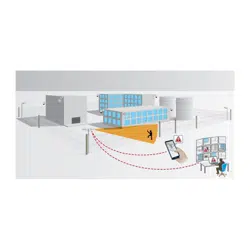Loading ...
Loading ...
Loading ...

AXIS Perimeter Defender
Get started
Its size in the view pane corresponds to the size of an average person at that position according to the current calibration. By moving
the avatar around, you can make sure its size is reasonable in relation to other objects or people in the scene. You should check the
avatar at different positions, since the avatar could be correctly sized at one position but incorrectly sized elsewhere in the image.
Use detection results to verify calibration
You can use the detection results to check how AXIS Perimeter Defender would perform with the current calibration if it received the
video footage of the person’s walk as a live stream.
1. Switch from Calibration results to Detection results.
2. Check the detections of the people or vehicles entering the surveillance scene:
- If the calibration is ne, people are marked with red rectangles and vehicles with blue rectangles.
- If people or vehicles are frequently not marked, the automatic calibration has most likely failed.
- A red zone shows the detection limit zone according to the computed calibration, that is, the zone where
the prerequisites on the human height in the image are not respected. In this zone the detection might fail
because of the target size.
Note
• If the computed calibration is wrong, the red zone is also wrong.
• If the person is too far away, he or she might not be marked. A minimum size is necessary for the detection to work.
For more information, see Mount the camera on page 12.
• Reviewing detection results may not work on remotely connected cameras, because the capture can have a too low frame
rate. It does not mean that the conguration has failed. Use the avatar and the grid to verify calibration instead.
Perform a manual calibration
If you have not attempted an automatic calibration, you need to capture a short video and create a composite image before you can
perform a manual calibration. Follow the same steps as for an automatic calibration (Perform an automatic calibration on page 18),
but select Manual instead of Automatic in the Calibration tab. To create the composite image after you have captured a video:
• move the slider to navigate in the video clip
• at key positions, click the camera icon to add images to the composite
Make sure the composite image reects the full cross-section of the scene: front, back, left and right.
When you have a composite image, created manually or automatically, you can continue the manual calibration.
22
Loading ...
Loading ...
Loading ...
